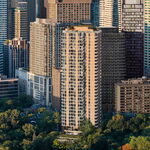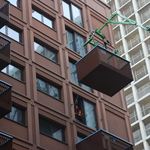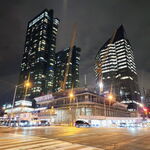TTC Board approves 2024 budget that freezes fares, increases service, and improves system safety
Dec. 20, 2023
Today, the TTC Board approved a 2024 operating budget that freezes fares, continues to increase service, and invests millions of dollars in system safety and cleanliness.
The $2.6 billion combined operating budgets for both conventional and Wheel-Trans services, and represents a 7.5 per cent increase over the approved 2023 budget.
Among other highlights, the 2024 budget:
• Freezes TTC fares at 2023 rates in recognition of the impact current economic conditions have on its customers;
• Fully funds the unplanned in-year service increases made in 2023 (to 95 per cent from 91 per cent) in response to increased and changing demand;
• Funds a further service increase to 97 per cent by September 2024;
• Increases Wheel-Trans service hours to meet the rising demand, estimated to reach 84 per cent of pre-pandemic levels by year-end 2024;
• Invests more than $28 million in the TTC’s Community Safety, Security and Well-Being program;
• Addresses substantial inflationary pressures for things like vehicle parts, service contracts, and escalating employee benefit-related expenses;
• Invests in increased maintenance capacity for Line 2 as well as for new and existing streetcars to be delivered in 2024;
• Funds operating and maintenance costs for the opening of Lines 5 and 6 in 2024 as well as full-year operations on the Line 3 SRT bus replacement service; and
• Envisions 2024 fare revenues based on 80 per cent of pre-pandemic ridership levels by year-end;
“The TTC is the lifeblood of this City, and it needs to be properly funded if it is to truly be the better way,” said Mayor Olivia Chow. “Frequent, safe, and affordable transit is something I have committed to supporting for the people of Toronto, and this budget makes improvements in all of those areas.”
“This budget will ensure the transit needs of our customers and employees are protected and enhanced,” said TTC Chair Jamaal Myers. “I’m confident that with this budget we can start to return transit service to where it was before the pandemic while laying the groundwork for further improvements. I want to thank TTC finance staff for their hard work preparing this budget and our front-line employees for delivering this important service every day.”
“TTC customers are coming back quicker than we expected, and this budget allows us to meet their needs for the next year,” said TTC CEO Rick Leary. “This budget balances our need to deliver safe and reliable service while addressing the increased operating costs associated with inflation and new transit lines that we need to manage.”
The TTC Board also approved the $12.4 billion 2024-2033 capital budget plan.
Highlights include:
• Fully covering the City/TTC’s one-third share for the Subway Car procurement to ensure readiness to proceed with the procurement of 55 subway trains, should matching funding from the Federal government be available;
• Advancing accessibility projects at Warden and Islington stations, and capacity improvement projects (including Bloor-Yonge Capacity Improvements and Line 1 and Line 2 Capacity Enhancement projects);
• Providing ongoing funding for 60 new Streetcars and associated infrastructure projects at Hillcrest and Russell, and 336 Hybrid Buses, 340 eBuses and charging infrastructure based on revised delivery schedules;
• Enhancing cybersecurity initiatives.
The TTC Board also considered a revised Capital Investment Plan report.
That report shows that despite significant capital/state-of-good-repair investments, there’s a growing backlog estimated to reach $8.244 billion by 2033, with unmet capital needs anticipated at nearly $17.916 billion over 10 years and $35.458 billion over 15 years.
The report notes that investing in the TTC’s future remains crucial for the city’s vitality, offering economic, environmental, and social benefits, not only for Toronto, but also for the GTA, Province of Ontario, and Canada at large.
The Board also heard a presentation from the University of Toronto’s Mobility Network highlighting the benefits of investing in public transit. Key economic metrics included in the Value of Transit Investment Interim Findings report show that investment in TTC operations and capital works translate into:
• Every dollar invested would add an additional $0.81 dollars in GDP, generating a value-added impact resulting in an increase in profit, taxes and spending on labour;
• Every dollar invested would create the equivalent of $2.14 of economic activity (Gross Output); and
• Every $1 million invested creates 13 new jobs.
Transit also brings numerous social equity and environmental benefits, the interim report notes.
All budget reports and presentations are available at
https://cdn.ttc.ca/-/media/Project/...48df9ab&hash=FCE56B024DB420B1DBAEB952F24D30C7




